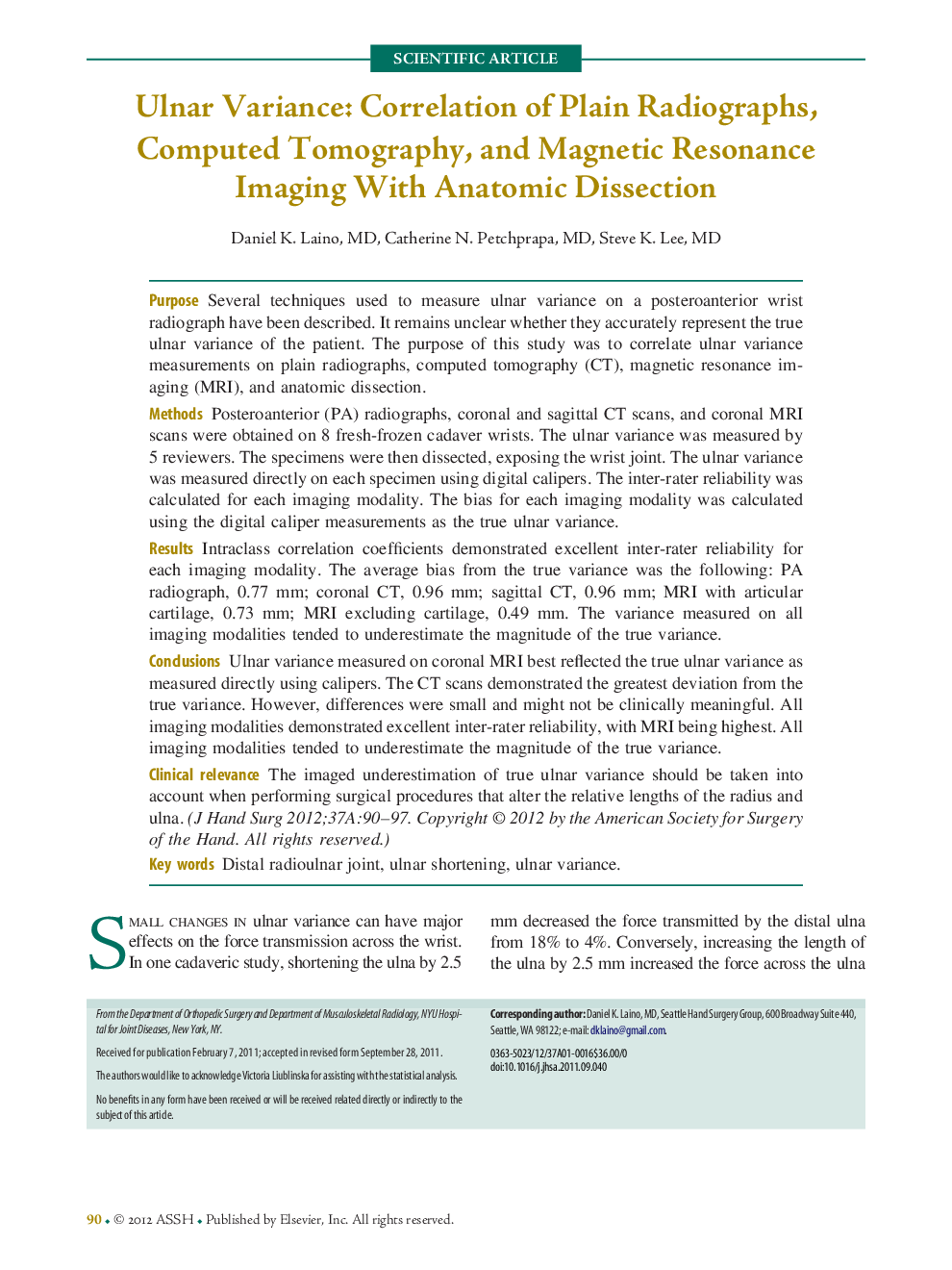| کد مقاله | کد نشریه | سال انتشار | مقاله انگلیسی | نسخه تمام متن |
|---|---|---|---|---|
| 4069626 | 1604400 | 2012 | 8 صفحه PDF | دانلود رایگان |

PurposeSeveral techniques used to measure ulnar variance on a posteroanterior wrist radiograph have been described. It remains unclear whether they accurately represent the true ulnar variance of the patient. The purpose of this study was to correlate ulnar variance measurements on plain radiographs, computed tomography (CT), magnetic resonance imaging (MRI), and anatomic dissection.MethodsPosteroanterior (PA) radiographs, coronal and sagittal CT scans, and coronal MRI scans were obtained on 8 fresh-frozen cadaver wrists. The ulnar variance was measured by 5 reviewers. The specimens were then dissected, exposing the wrist joint. The ulnar variance was measured directly on each specimen using digital calipers. The inter-rater reliability was calculated for each imaging modality. The bias for each imaging modality was calculated using the digital caliper measurements as the true ulnar variance.ResultsIntraclass correlation coefficients demonstrated excellent inter-rater reliability for each imaging modality. The average bias from the true variance was the following: PA radiograph, 0.77 mm; coronal CT, 0.96 mm; sagittal CT, 0.96 mm; MRI with articular cartilage, 0.73 mm; MRI excluding cartilage, 0.49 mm. The variance measured on all imaging modalities tended to underestimate the magnitude of the true variance.ConclusionsUlnar variance measured on coronal MRI best reflected the true ulnar variance as measured directly using calipers. The CT scans demonstrated the greatest deviation from the true variance. However, differences were small and might not be clinically meaningful. All imaging modalities demonstrated excellent inter-rater reliability, with MRI being highest. All imaging modalities tended to underestimate the magnitude of the true variance.Clinical relevanceThe imaged underestimation of true ulnar variance should be taken into account when performing surgical procedures that alter the relative lengths of the radius and ulna.
Journal: The Journal of Hand Surgery - Volume 37, Issue 1, January 2012, Pages 90–97